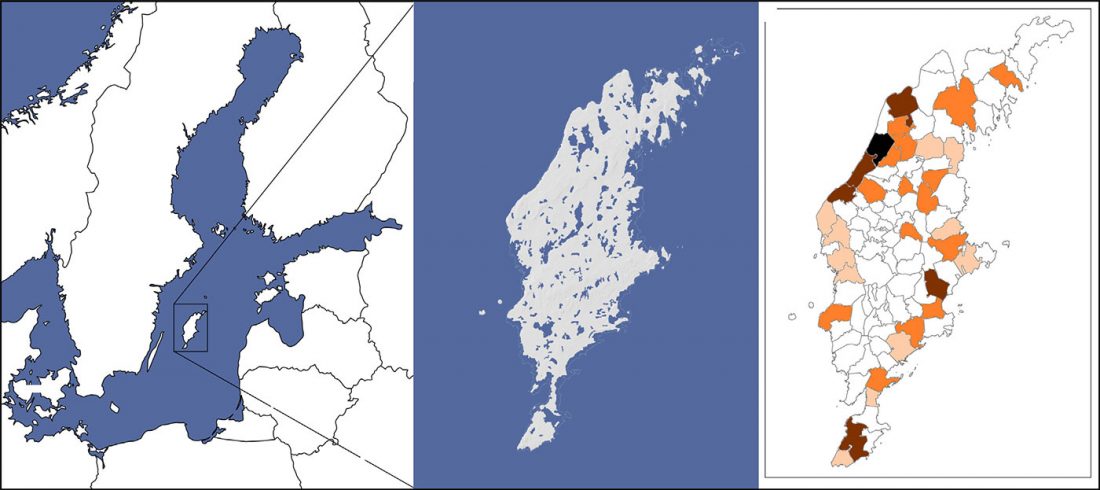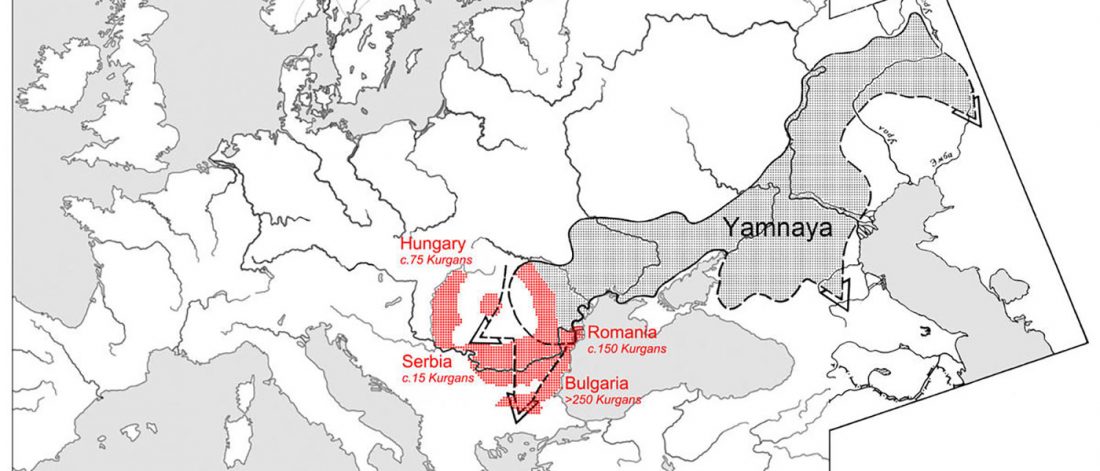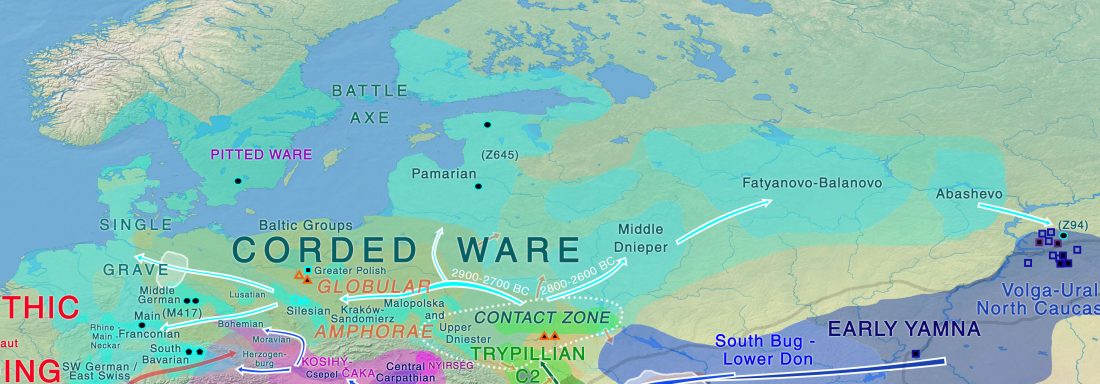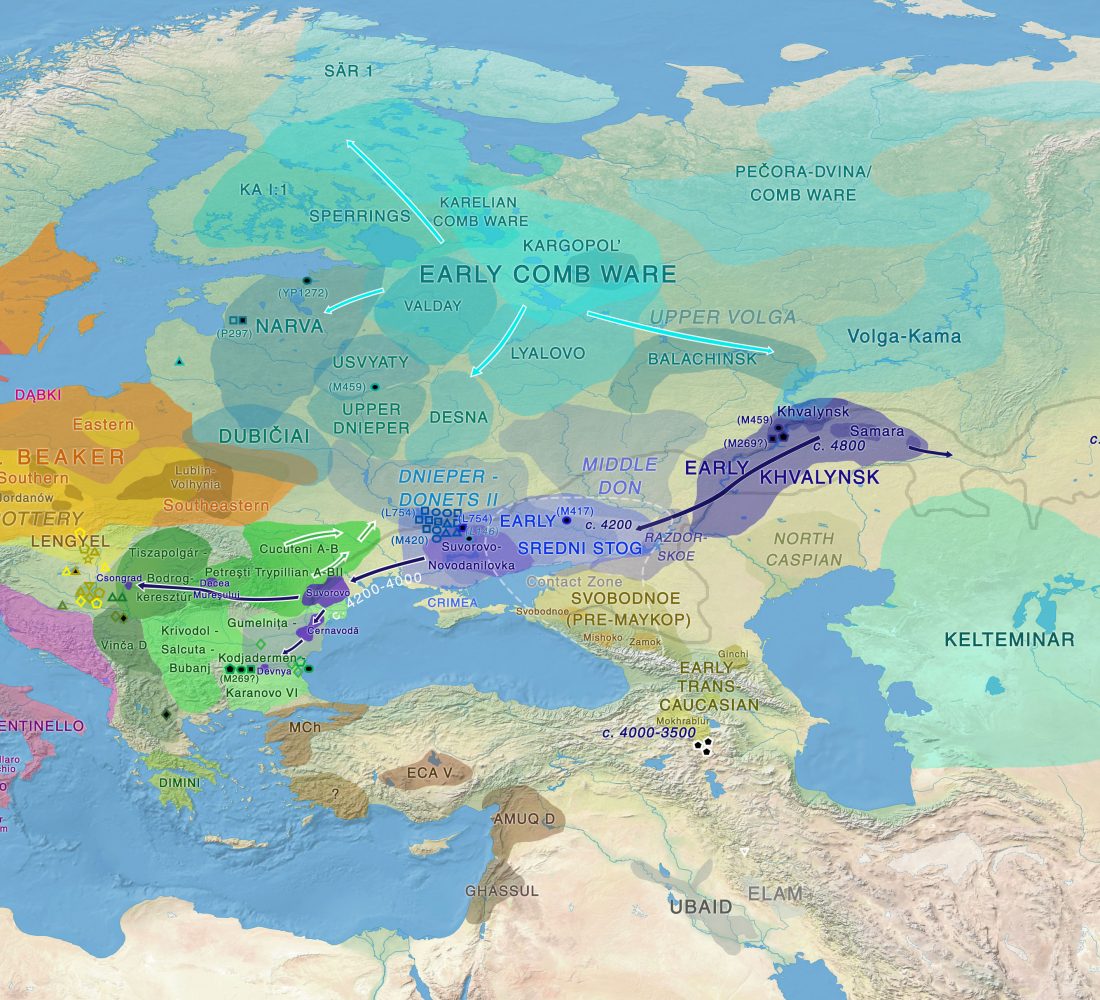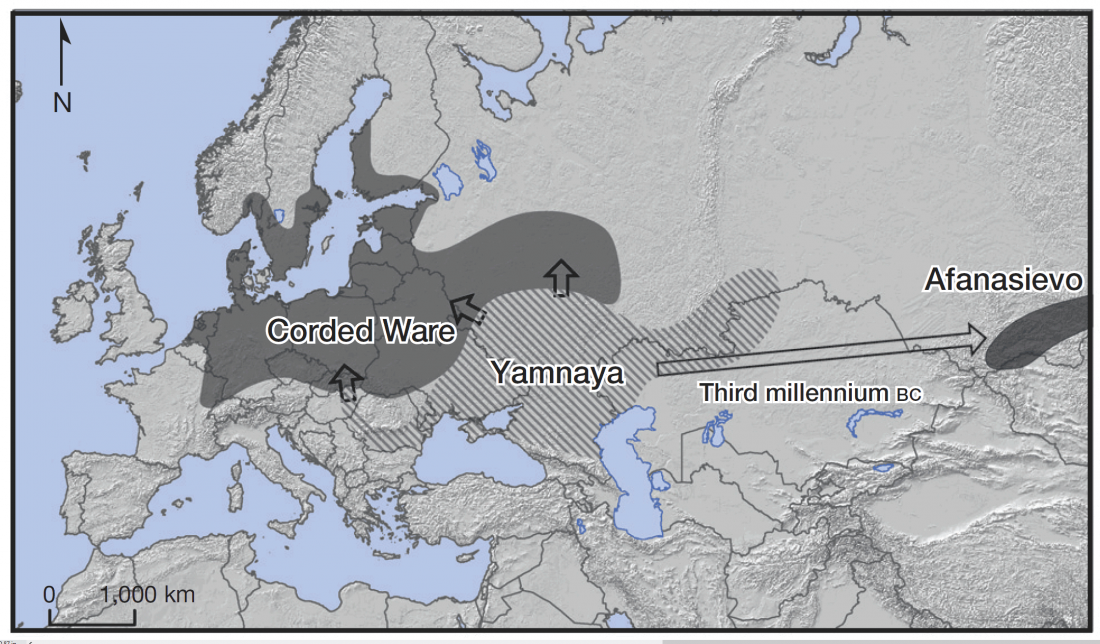Chapter The Sea and Bronze Age Transformations, by Christopher Prescott, Anette Sand-Eriksen, and Knut Ivar Austvoll, In: Water and Power in Past Societies (2018), Emily Holt, Proceedings of the IEMA Postdoctoral Visiting Scholar Conference on Theories and Methods in Archaeology, Vol. 6.
NOTE. You can download the chapter draft at Academia.edu.
Abstract (emphasis mine):
… Read the rest “Minimal Corded Ware culture impact in Scandinavia – Bell Beakers the unifying maritime elite”Along the western Norwegian coast, in the northwestern region of the Nordic Late Neolithic and Bronze Age (2350–500 BCE) there is cultural homogeneity but variable expressions of political hierarchy. Although new ideological institutions, technology (e.g., metallurgy and boat building), intensified agro‑pastoral farming, and


